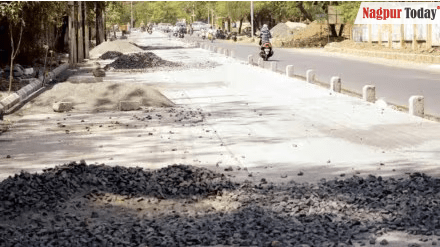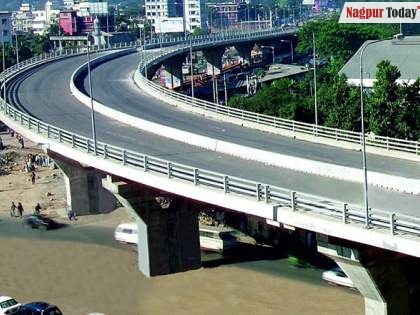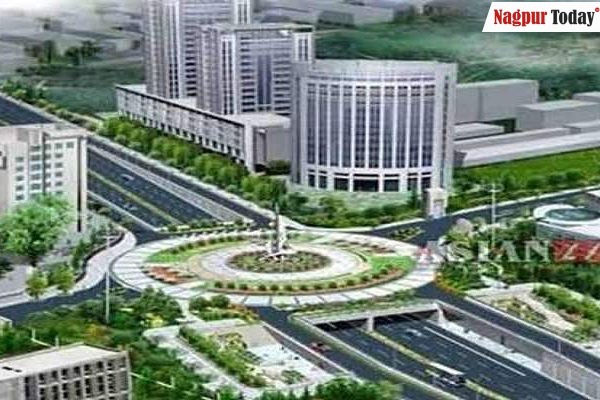Nagpur: Are Nagpurians paying the price for haphazard concretisation of roads and rapid urbanisation in the form of heat stress? Recent findings by the Centre for Science and Environment (CSE) highlight the exacerbation of heat stress as a consequence of these developments.
A study by Centre for Science and Environment (CSE) revealed that increasing concretisation and humidity levels are exacerbating heat stress in India’s megacities, which are not cooling down at night at the same rate as a decade ago.
In recent times, Nagpur is witnessing a network of roads being concretised and growing, uncontrolled urbanisation. The CSE analysed summer air temperature, land surface temperature, and relative humidity data for six megacities in the country from January 2001 to April 2024. The think tank found that increased humidity is worsening heat stress across all climate zones, even nullifying the marginal drop in air temperatures in the cities.
It poses a grave risk to lives, especially among vulnerable groups like the elderly, babies, pregnant women, those who live in slums and work outdoors.
The CSE report comes at a time when blistering heat waves are affecting health and livelihoods in large parts of India. “Assessing the changing trend in heat, relative humidity, and land surface temperature along with day and night time temperatures is necessary to develop a comprehensive heat management plan for urban centres,” said Anumita Roychowdhury, Executive Director of Research and Advocacy at the CSE.
Avikal Somvanshi, senior programme manager at CSE’s Urban Lab, said addressing the combination of high heat and humidity is particularly important as it can compromise the human body’s main cooling mechanism, sweating. “The evaporation of sweat from the skin cools our bodies, but higher humidity levels limit this natural cooling. As a result, people can suffer heat stress and illness, and the consequences can even be fatal at much lower ambient temperatures,” he explained.
The study showed that megacities are not cooling down at night.
The land surface temperature during the summers of 2001-2010 would drop by 6.20-13.20 °C from the daytime peak to the night time low. In the last 10 summers — 2014-2023 — night time cooling has reduced to 6.20-11.50 degrees C, the CSE said.
“Hot nights are as dangerous as midday peak temperatures. People get little chance to recover from daytime heat if temperatures remain high overnight,” Somvanshi said.
The study said that rising humidity levels have also made monsoons in Delhi, Mumbai, Kolkata, and Chennai hotter than pre-monsoon periods. It noted that all megacities have become more concretised in the last two decades, increasing heat stress.
The CSE highlighted that an increase in green cover is not effective in mitigating night time heat. Green cover has declined in many cities.
This is the third straight year of severe heat waves in India, which have been far longer — over 10 days-long — this time than the usual four to eight days. Thanks to climate change, temperatures have shot up, as has humidity. But, as the CSE report points out, the effect of this — the moisture in the air keeps sweat from evaporating fast enough, making it seem even hotter than it actually is — is compounded by other factors, including changes in land use and the growing urban sprawl.
This has resulted in the “urban heat island effect”: The trapping of heat due to a dense concentration of buildings, paved roads and other surfaces made of materials like concrete, glass and steel, results in higher temperatures in city centres than in the outlying areas. One alarming consequence of this is that summer nights now offer little respite from the searing heat of the day, with cities across climatic zones not cooling down at the rate they once did. This is a serious cause for concern as the heat stress continues to build, increasing the risk of heat-related illnesses and even death.
Large parts of northern and central India are experiencing extreme heat wave conditions, with temperatures surpassing 50 degrees Celsius in some regions.
The haphazard concretisation of roads and rapid urbanisation in Nagpur have contributed to an increase in heat stress, posing serious risks to public health, particularly among vulnerable groups. Addressing these challenges requires a concerted effort towards sustainable urban planning, increasing green cover, and raising public awareness about heat stress mitigation strategies. By taking these steps, Nagpur can work towards becoming a more resilient and liveable city amidst the growing threats of climate change.


















